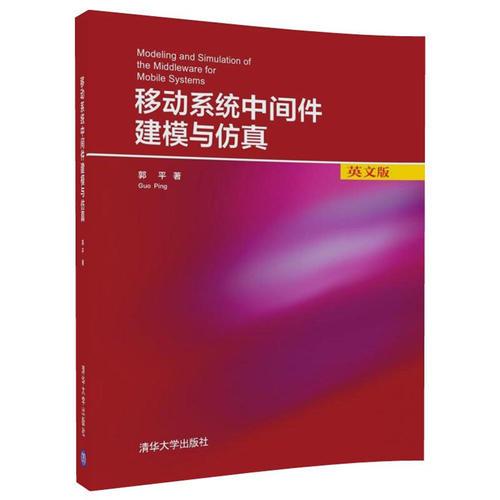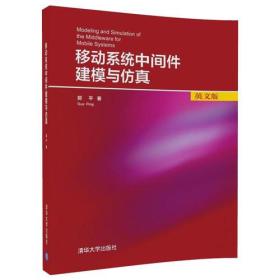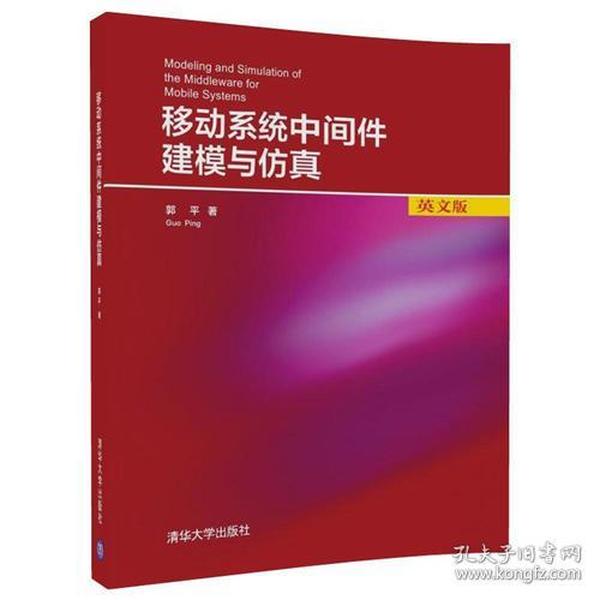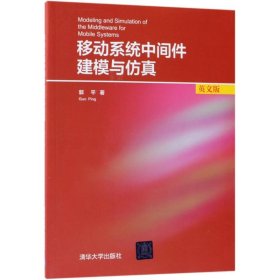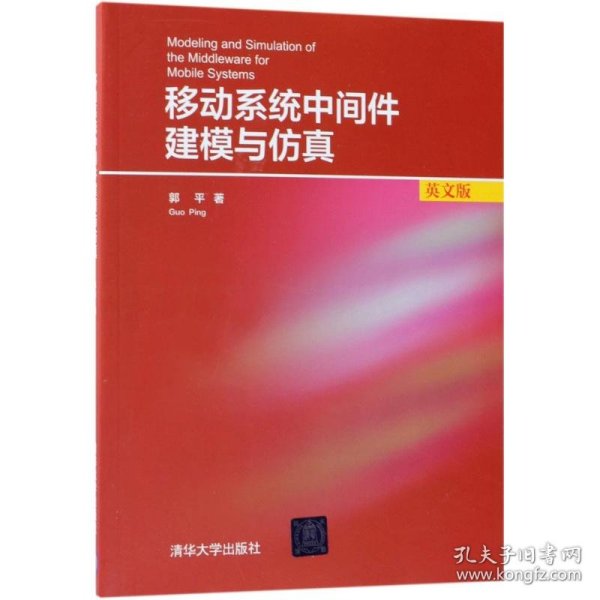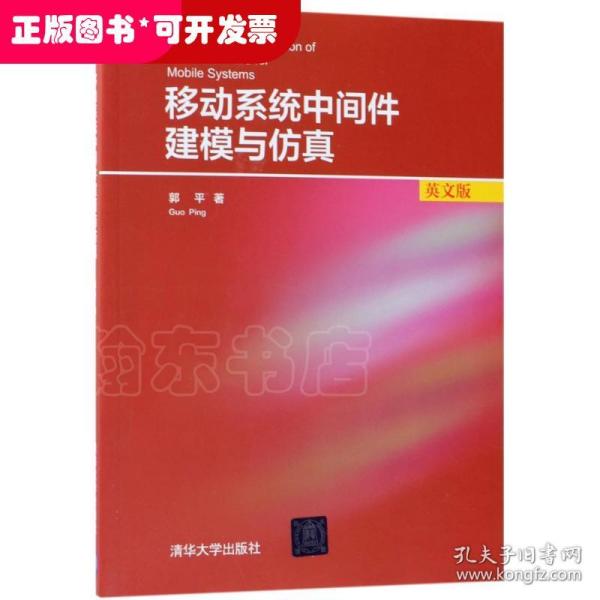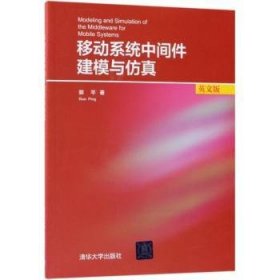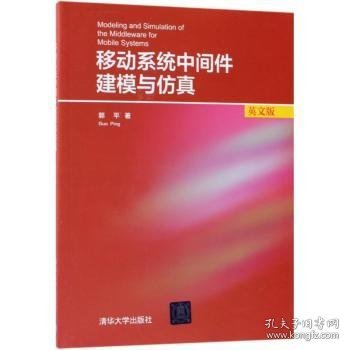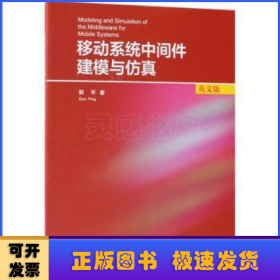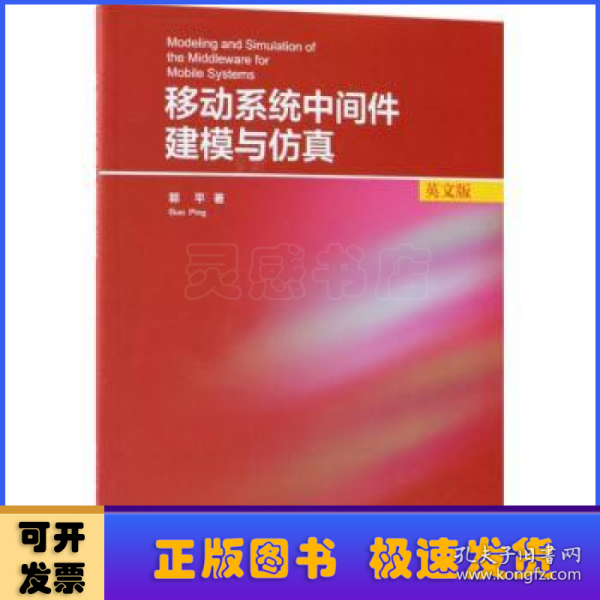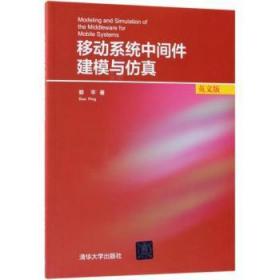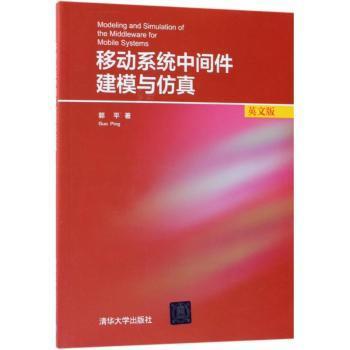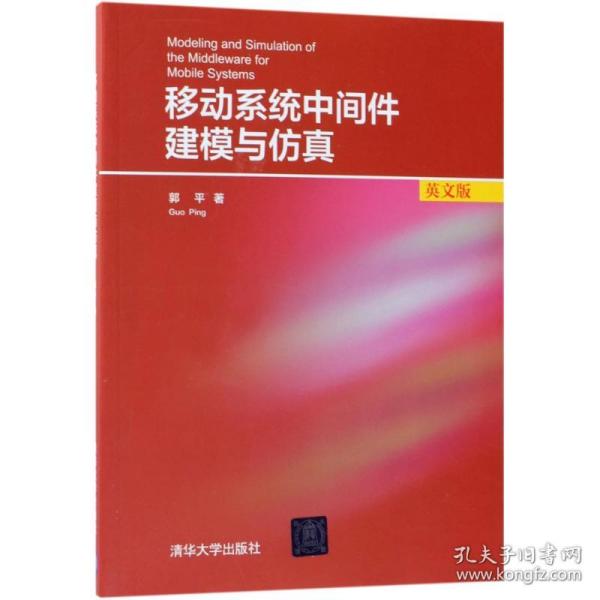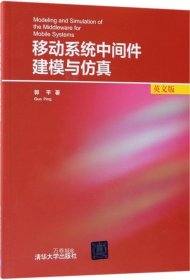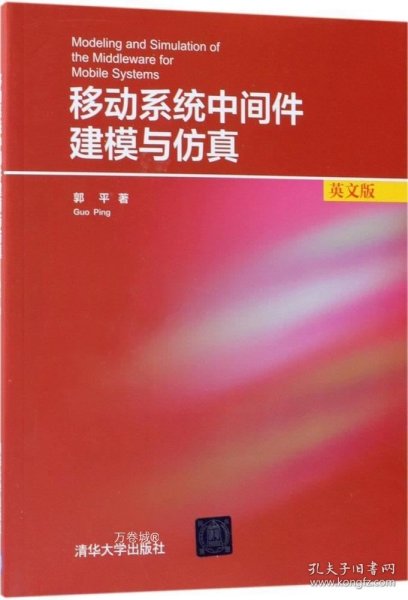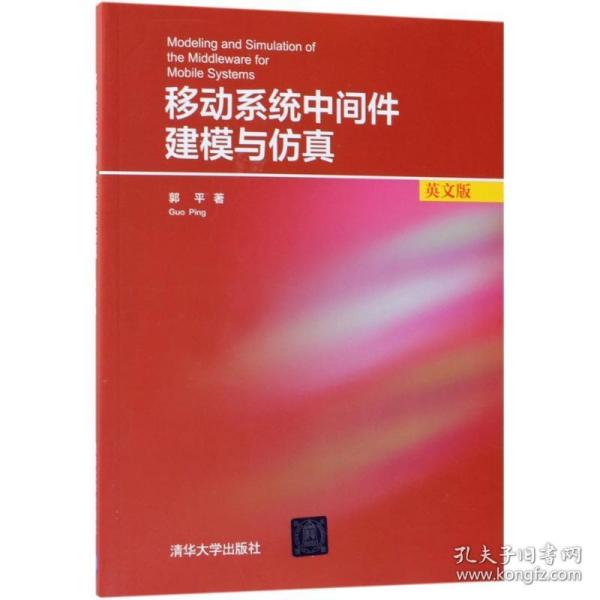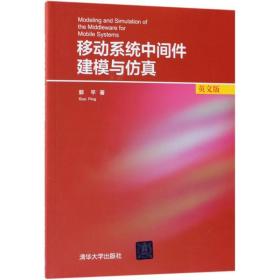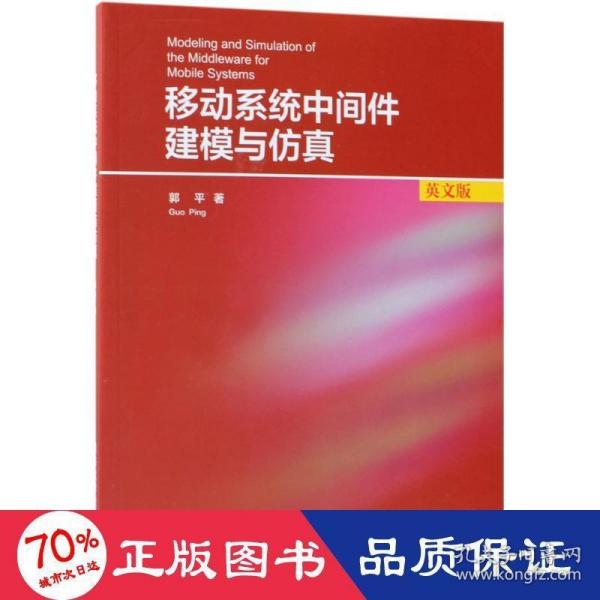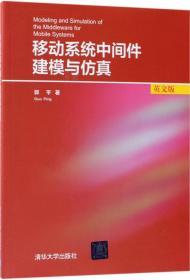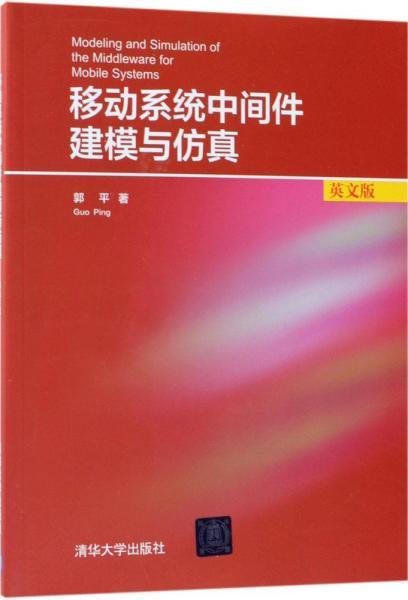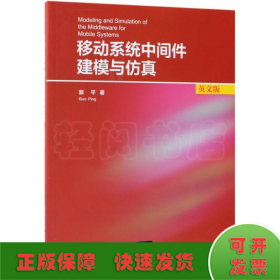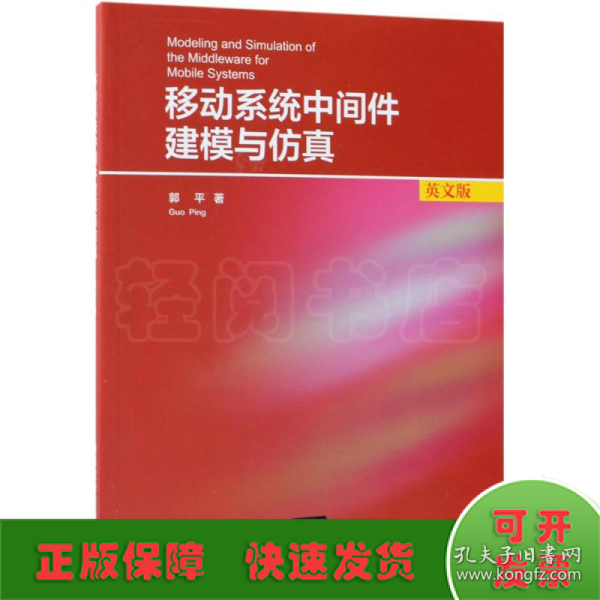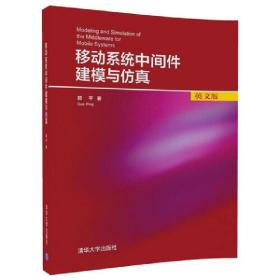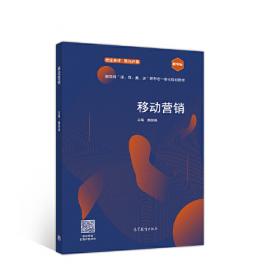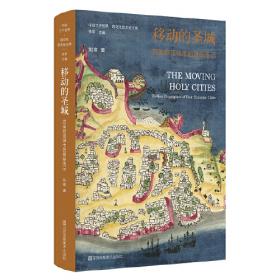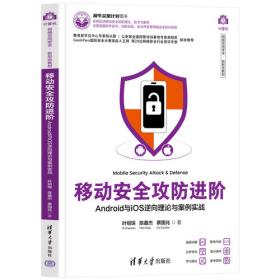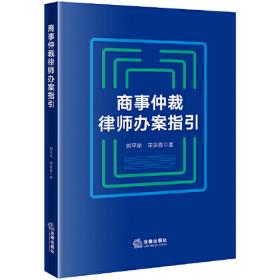移动系统中间件建模与仿真
出版时间:
2018-06
版次:
1
ISBN:
9787302491873
定价:
59.00
装帧:
其他
开本:
16开
纸张:
胶版纸
页数:
269页
字数:
363千字
-
本书主要介绍基于软件架构的软件建模与设计的相关知识,以移动系统作为例子,展示了如何使用基于和UML类似的元建模和图形转换技术来解决实际问题,主要内容包括问题领域、建模语言、软件架构式样、仿真技术、细化技术以及工具支持与代码生成。本书不仅具有理论研究价值,而且具有较高的工程应用价值,对移动系统和软件架构软件建模感兴趣的研究开发者和工程师具有很好的参考价值。 Chapter 1 Introduction 1
1.1 Motivation:middlewareformobilesystems .......... 1
1.2 Problemswitharchitecture-centricapproaches......... 4
1.3 Objectivesofthebook...................... 7
1.4 Ourapproach........................... 10
1.5 Structureofthebook ...................... 13
Chapter 2 The Problem Domain 15
2.1 Overview ............................. 15
2.2 Middle
2.3 Middle
2.3.1
2.3.2
2.3.3
2.3.4
2.4 Middle
2.4.1
2.4.2
2.4.3
2.4.4
warefordistributedsystems............... 16
wareformobilesystems ................. 22
Mobilesystems...................... 23
Mobileapplications.................... 24
Problemswithmobileapplicationdevelopment .... 26
Middlewareformobilesystems ............. 27
wareformobilesystems:examples ........... 32
Event-based(orpublish/subscribe)middleware ... 32
Tuplespace-basedmiddleware ............. 36
Objectandcomponentmiddleware........... 39
Generalizationofcommonalities ............ 42
2.5 Aspectstobemodeled...................... 44
2.5.1 Modelingmobility .................... 44
2.5.2 Modelingotheraspects ................. 46
Chapter 3 Related Work 49
3.1 Overview ............................. 49
3.2 Requirements........................... 50
3.2.1 Requirementsforstylespeci.cation........... 50
3.2.2 Requirementsforthemodelinglanguage........ 53
3.3 Surveyofrelatedwork...................... 55
3.3.1 Surveyofarchitecturalstyles .............. 55
3.3.2 Surveyofmodelinglanguages.............. 64
Chapter 4 An Overview of the Approach 68
4.1 Overview ............................. 68
4.2 Thearchitecturalstyleforthemiddleware........... 70
4.2.1 Middleware-inducedstyle ................ 70
4.2.2 Layeredstructureofthestyle.............. 71
4.3 Themodelingandsimulationframework............ 73
4.3.1 Style-basedmodeling................... 73
4.3.2 Thestyleforthemiddleware .............. 78
4.3.3 Re.nement ........................ 79
4.3.4 Simulation ........................ 82
Chapter 5 Architectural Style-based Modeling 86
5.1 Overview ............................. 86
5.2 BackgroundoftheTGTS .................... 87
5.2.1 Graphsandgraphmorphism .............. 87
5.2.2 Graphsandobject-orientedmodeling.......... 88
5.2.3 Rulesandgraphtransformation ............ 89
5.2.4 Metamodeling ...................... 91
5.2.5 Typedgraphtransformationsystemandstylespeci.ca-tion ............................ 92
5.3 Speci.cationofthestyle..................... 94
5.3.1 Structuralpart ...................... 95
5.3.2 Behavioralpart...................... 97
5.3.3 Syntaxandsemanticsofthemodelinglanguage.... 101
Contents vii
Chapter 6 Style Examples 104
6.1 Overview ............................. 104
6.2 Themiddlewarefornomadicnetworks ............. 106
6.2.1 Architecturalcommonalities............... 106
6.2.2 Theconcretemiddleware:WirelessCORBA...... 110
6.3 Conceptualstyle ......................... 117
6.3.1 Structuralpart ...................... 118
6.3.2 Behavioralpart...................... 120
6.4 Platform-independentconcretestyle .............. 123
6.4.1 Structuralpart ...................... 123
6.4.2 Behavioralpart...................... 125
6.5 Platform-specificconcretestyle:WirelessCORBA ......... 133
6.5.1 Structuralpart ...................... 133
6.5.2 Behavioralpart...................... 137
6.5.3 IDLsemanticsspeci.cation ............... 147
Chapter 7 Style Re.nement 149
7.1 Overview ............................. 149
7.2 Requirementsforthere.nement ................ 150
7.3 Existingapproachesandopenproblems ............ 156
7.4 Rulemapping-basedstylere.nement ............. 158
7.4.1 Structuralre.nement .................. 159
7.4.2 Behavioralre.nement .................. 162
7.4.3 Re.nementoftheTGTS-basedstyle ......... 183
7.5 Evaluationandcomparison ................... 184
Chapter 8 Style Simulation and Tools 187
8.1 Overview ............................. 187
8.2 Graphtransformationsimulationtools............. 189
8.2.1 Requirementsforthetool ................ 189
8.2.2 AGG............................ 191
8.2.3 PROGRES ........................ 192
8.2.4 Fujaba........................... 194
8.2.5 Evaluationandcomparison ............... 195
8.3 Style-basedsimulation ...................... 198
8.3.1 Stylespeci.cationandsimulation............ 198
8.3.2 E.cientvalidation.................... 204
8.3.3 Re.nementconsistencycheck.............. 207
8.3.4 Behavioralconsistencycheck .............. 208
8.3.5 Style-basedengineering ................. 216
Chapter 9 Conclusion 219
9.1 Evaluation............................. 219
9.1.1 Evaluatingthestylespeci.cation............ 220
9.1.2 Evaluatingthemodelinglanguage ........... 221
9.2 Relevancetopractice....................... 224
9.2.1 Styleanddesign ..................... 224
9.2.2 Theconceptualstyleanddesign ............ 225
9.2.3 Theplatform-independentconcretestyleanddesign . 227
9.2.4 Theplatform-speci.cconcretestyleanddesign .... 229
9.3 Contributions........................... 230
9.4 Futurework............................ 234
9.4.1 Industryprojectexperience ............... 234
9.4.2 Automationandtoolsupport.............. 235
9.4.3 Developmentofotherarchitecturalstyles ....... 236
9.4.4 Modelbasedtesting ................... 237
Appendix OMG Wireless CORBA IDL 239
Bibliography 249
List of Figures 265
List of Tables 270
-
内容简介:
本书主要介绍基于软件架构的软件建模与设计的相关知识,以移动系统作为例子,展示了如何使用基于和UML类似的元建模和图形转换技术来解决实际问题,主要内容包括问题领域、建模语言、软件架构式样、仿真技术、细化技术以及工具支持与代码生成。本书不仅具有理论研究价值,而且具有较高的工程应用价值,对移动系统和软件架构软件建模感兴趣的研究开发者和工程师具有很好的参考价值。
-
目录:
Chapter 1 Introduction 1
1.1 Motivation:middlewareformobilesystems .......... 1
1.2 Problemswitharchitecture-centricapproaches......... 4
1.3 Objectivesofthebook...................... 7
1.4 Ourapproach........................... 10
1.5 Structureofthebook ...................... 13
Chapter 2 The Problem Domain 15
2.1 Overview ............................. 15
2.2 Middle
2.3 Middle
2.3.1
2.3.2
2.3.3
2.3.4
2.4 Middle
2.4.1
2.4.2
2.4.3
2.4.4
warefordistributedsystems............... 16
wareformobilesystems ................. 22
Mobilesystems...................... 23
Mobileapplications.................... 24
Problemswithmobileapplicationdevelopment .... 26
Middlewareformobilesystems ............. 27
wareformobilesystems:examples ........... 32
Event-based(orpublish/subscribe)middleware ... 32
Tuplespace-basedmiddleware ............. 36
Objectandcomponentmiddleware........... 39
Generalizationofcommonalities ............ 42
2.5 Aspectstobemodeled...................... 44
2.5.1 Modelingmobility .................... 44
2.5.2 Modelingotheraspects ................. 46
Chapter 3 Related Work 49
3.1 Overview ............................. 49
3.2 Requirements........................... 50
3.2.1 Requirementsforstylespeci.cation........... 50
3.2.2 Requirementsforthemodelinglanguage........ 53
3.3 Surveyofrelatedwork...................... 55
3.3.1 Surveyofarchitecturalstyles .............. 55
3.3.2 Surveyofmodelinglanguages.............. 64
Chapter 4 An Overview of the Approach 68
4.1 Overview ............................. 68
4.2 Thearchitecturalstyleforthemiddleware........... 70
4.2.1 Middleware-inducedstyle ................ 70
4.2.2 Layeredstructureofthestyle.............. 71
4.3 Themodelingandsimulationframework............ 73
4.3.1 Style-basedmodeling................... 73
4.3.2 Thestyleforthemiddleware .............. 78
4.3.3 Re.nement ........................ 79
4.3.4 Simulation ........................ 82
Chapter 5 Architectural Style-based Modeling 86
5.1 Overview ............................. 86
5.2 BackgroundoftheTGTS .................... 87
5.2.1 Graphsandgraphmorphism .............. 87
5.2.2 Graphsandobject-orientedmodeling.......... 88
5.2.3 Rulesandgraphtransformation ............ 89
5.2.4 Metamodeling ...................... 91
5.2.5 Typedgraphtransformationsystemandstylespeci.ca-tion ............................ 92
5.3 Speci.cationofthestyle..................... 94
5.3.1 Structuralpart ...................... 95
5.3.2 Behavioralpart...................... 97
5.3.3 Syntaxandsemanticsofthemodelinglanguage.... 101
Contents vii
Chapter 6 Style Examples 104
6.1 Overview ............................. 104
6.2 Themiddlewarefornomadicnetworks ............. 106
6.2.1 Architecturalcommonalities............... 106
6.2.2 Theconcretemiddleware:WirelessCORBA...... 110
6.3 Conceptualstyle ......................... 117
6.3.1 Structuralpart ...................... 118
6.3.2 Behavioralpart...................... 120
6.4 Platform-independentconcretestyle .............. 123
6.4.1 Structuralpart ...................... 123
6.4.2 Behavioralpart...................... 125
6.5 Platform-specificconcretestyle:WirelessCORBA ......... 133
6.5.1 Structuralpart ...................... 133
6.5.2 Behavioralpart...................... 137
6.5.3 IDLsemanticsspeci.cation ............... 147
Chapter 7 Style Re.nement 149
7.1 Overview ............................. 149
7.2 Requirementsforthere.nement ................ 150
7.3 Existingapproachesandopenproblems ............ 156
7.4 Rulemapping-basedstylere.nement ............. 158
7.4.1 Structuralre.nement .................. 159
7.4.2 Behavioralre.nement .................. 162
7.4.3 Re.nementoftheTGTS-basedstyle ......... 183
7.5 Evaluationandcomparison ................... 184
Chapter 8 Style Simulation and Tools 187
8.1 Overview ............................. 187
8.2 Graphtransformationsimulationtools............. 189
8.2.1 Requirementsforthetool ................ 189
8.2.2 AGG............................ 191
8.2.3 PROGRES ........................ 192
8.2.4 Fujaba........................... 194
8.2.5 Evaluationandcomparison ............... 195
8.3 Style-basedsimulation ...................... 198
8.3.1 Stylespeci.cationandsimulation............ 198
8.3.2 E.cientvalidation.................... 204
8.3.3 Re.nementconsistencycheck.............. 207
8.3.4 Behavioralconsistencycheck .............. 208
8.3.5 Style-basedengineering ................. 216
Chapter 9 Conclusion 219
9.1 Evaluation............................. 219
9.1.1 Evaluatingthestylespeci.cation............ 220
9.1.2 Evaluatingthemodelinglanguage ........... 221
9.2 Relevancetopractice....................... 224
9.2.1 Styleanddesign ..................... 224
9.2.2 Theconceptualstyleanddesign ............ 225
9.2.3 Theplatform-independentconcretestyleanddesign . 227
9.2.4 Theplatform-speci.cconcretestyleanddesign .... 229
9.3 Contributions........................... 230
9.4 Futurework............................ 234
9.4.1 Industryprojectexperience ............... 234
9.4.2 Automationandtoolsupport.............. 235
9.4.3 Developmentofotherarchitecturalstyles ....... 236
9.4.4 Modelbasedtesting ................... 237
Appendix OMG Wireless CORBA IDL 239
Bibliography 249
List of Figures 265
List of Tables 270
查看详情
-
全新
河北省保定市
平均发货25小时
成功完成率84.31%
-
全新
河北省保定市
平均发货36小时
成功完成率85.58%
-
全新
-
全新
河北省保定市
平均发货21小时
成功完成率83.13%
-
全新
河北省保定市
平均发货18小时
成功完成率80.73%
-
全新
河北省保定市
平均发货17小时
成功完成率81.76%
-
全新
河北省保定市
平均发货18小时
成功完成率81.27%
-
全新
河北省保定市
平均发货18小时
成功完成率82.78%
-
全新
河北省保定市
平均发货6小时
成功完成率84.01%
-
全新
北京市海淀区
平均发货10小时
成功完成率88.45%
-
全新
天津市西青区
平均发货14小时
成功完成率89.74%
-
全新
北京市海淀区
平均发货20小时
成功完成率86.35%
-
全新
河北省保定市
平均发货13小时
成功完成率88.85%
-
全新
四川省成都市
平均发货14小时
成功完成率80.21%
-
全新
河北省保定市
平均发货5小时
成功完成率83.49%
-
全新
河北省保定市
平均发货8小时
成功完成率83.02%
-
全新
广东省广州市
平均发货18小时
成功完成率87.53%
-
全新
广东省广州市
平均发货17小时
成功完成率88.79%
-
全新
广东省广州市
平均发货25小时
成功完成率83.08%
-
全新
山东省泰安市
平均发货16小时
成功完成率93.79%
-
全新
北京市通州区
平均发货9小时
成功完成率89.45%
-
全新
北京市丰台区
平均发货8小时
成功完成率90.9%
-
全新
河南省洛阳市
平均发货17小时
成功完成率94.87%
-
全新
上海市黄浦区
平均发货11小时
成功完成率94.34%
-
全新
北京市朝阳区
平均发货12小时
成功完成率85.96%
-
全新
广东省广州市
平均发货10小时
成功完成率87.58%
-
全新
浙江省嘉兴市
平均发货12小时
成功完成率92.98%
-
全新
北京市西城区
平均发货18小时
成功完成率91.75%
-
全新
北京市东城区
平均发货25小时
成功完成率85.58%
-
全新
江苏省无锡市
平均发货10小时
成功完成率94.14%
-
全新
河南省洛阳市
平均发货20小时
成功完成率81.58%
-
全新
天津市河东区
平均发货24小时
成功完成率91.03%
-
全新
江苏省苏州市
平均发货9小时
成功完成率95.68%
-
全新
天津市西青区
平均发货14小时
成功完成率89.74%
-
全新
北京市顺义区
平均发货11小时
成功完成率93.93%
-
全新
北京市丰台区
平均发货25小时
成功完成率87.61%
-
全新
河北省保定市
平均发货26小时
成功完成率89.57%
-
全新
江苏省无锡市
平均发货8小时
成功完成率96.12%
-
全新
河北省保定市
平均发货15小时
成功完成率91.2%
-
全新
北京市朝阳区
平均发货9小时
成功完成率96.83%
-
全新
河北省保定市
平均发货29小时
成功完成率90.28%
-
全新
湖南省邵阳市
平均发货4小时
成功完成率80.67%
-
全新
上海市浦东新区
平均发货22小时
成功完成率80.33%
-
全新
四川省成都市
平均发货9小时
成功完成率96.73%
-
全新
广东省广州市
平均发货8小时
成功完成率88.27%
-
全新
江苏省无锡市
平均发货16小时
成功完成率94.49%
-
全新
广东省广州市
平均发货7小时
成功完成率88.97%
-
全新
江苏省南京市
平均发货15小时
成功完成率82.48%
-
全新
江苏省南京市
平均发货7小时
成功完成率98.05%
-
全新

 占位居中
占位居中

